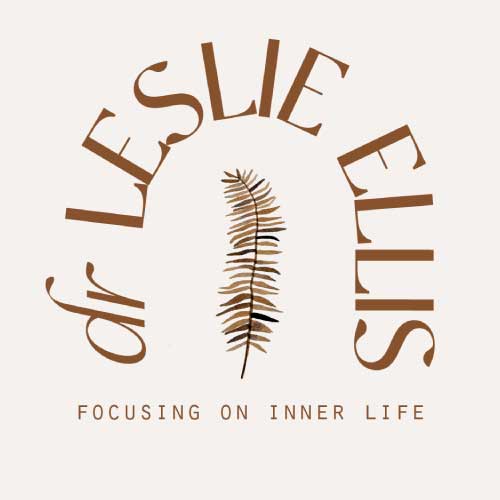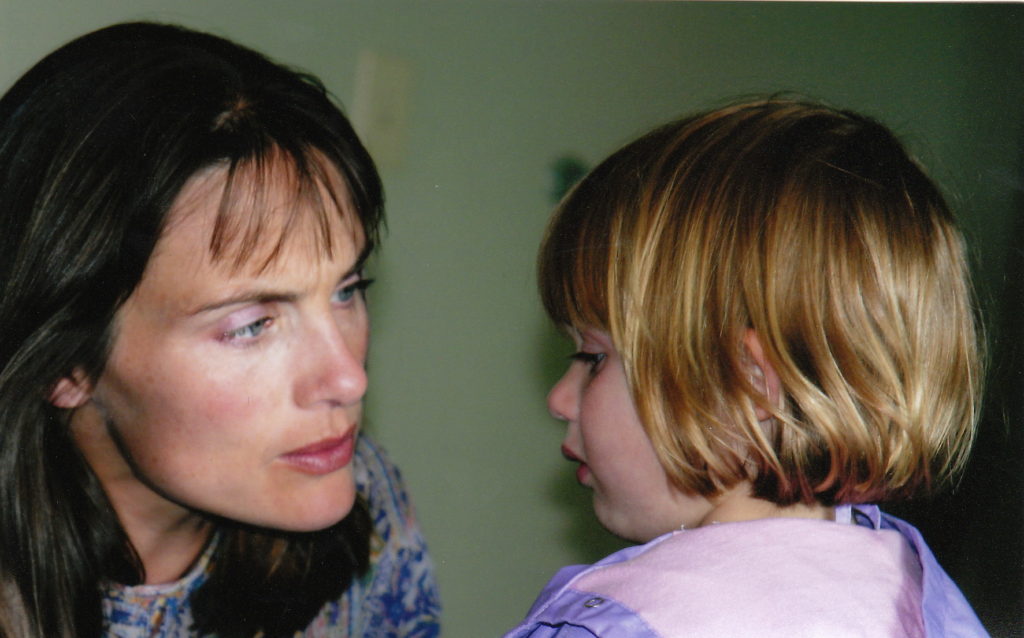Experiential Dreamwork Certification Program
Join us for an amazing journey that will bring about insight and growth, both personally and professionally.
Now taking applications for FALL cohort 2022. Reserve your spot now!
This program is a deep dive into the world of dreams, and a clear path to learning how to engage yourself and guide others in embodied experiential dreamwork practices. Upon completion of this program, you will be able to confidently engage with your own dreams and the dreams of others, both one-on-one and in groups. And you will be able to help those who suffer from trauma-related nightmares to not only reduce nightmare frequency and distress, but also PTSD symptoms. This course is a companion to Dr. Leslie Ellis’ recent book, A Clinician’s Guide to Dream Therapy but goes beyond the material in the book to include personal and group dreamwork, and co-creative dreamwork.
TIMING OF ONLINE LIVE CLASSES:
There will be 10 2.5-hour live group Q/A and dreamwork practice/demo sessions.
Time: 9:30 AM to NOON PACIFIC on the third Wednesday of each month, starting in September. Sessions will be recorded and available to view at any time, but in-class attendance is strongly encouraged.
Instructor: Dr. Leslie Ellis
Dr. Ellis is a world expert in the clinical use of dreams, with a specialty in working with PTSD nightmares. She has a PhD in Clinical Psychology from the Chicago School of Professional Psychology and a Masters in Counselling Psychology from Pacifica Graduate Institute. She is vice president of The International Focusing Institute and has more than 20 years’ experience in clinical practice. She has taught a focusing certification program to therapists for more than 10 years, and is now offering online instruction in dreamwork to therapists and anyone interested in cultivating inner life through dreamwork, focusing and active imagination. She is the author of A Clinician’s Guide to Dream Therapy (Routledge, 2019), as well as numerous papers and book chapters on focusing and embodied, experiential dreamwork. She has also taught and delivered talks worldwide, including a recent keynote for the International Association for the Study of Dreams.
Who should attend?
This course is aimed at mental health professionals and students working toward psychotherapy, counselling, social work or coaching certification, as well as those with a strong interest in dreams and dreamwork. It is also of interest to spiritual directors and those intending to lead dream groups. This program is intended as an adjunct to the practice you already have, and it is up to each student to practice dreamwork within the scope of your own skills and training base. It is also not a substitute for therapy, although working with dreams is often therapeutic. If you have any questions about whether this program is for you, feel free to ask.
CEUs. A total of 50 CE credits are offered for this program from the Canadian Counselling Association.
Online Instruction includes the following courses:
Working with your OWN dreams
Dreamwork Demystified, the clinical use of dreams, parts 1 and 2
Working with Nightmares
Interactive instruction and practice
Monthly dream group meeting
Live demos and Q/A sessions
Practice partnership to exchange dream sessions
Online discussions, and bonus articles, videos and demos on topics of interest to the group
Assignments
Dream journal (for yourself)
Records of dream practice session, and questions and insights that arise
Option to present a case study, video, paper, artwork on an aspect of working with dreams
Reading
Ellis, Leslie. (2019) A Clinician’s Guide to Dream Therapy: Implementing Simple and Effective Dreamwork. New York & London: Routledge.
Gendlin, E. T. (1986). Let Your Body Interpret Your Dreams. Wilmette, IL: Chiron Publications.
Gendlin, E. T. (1978/1981). Focusing. New York, NY: Bantam Books
Suggested Reading
Bosnak, R. (1998). A little course in dreams. Boston & London: Shambala.
Malinowski, J. (2021). The psychology of dreaming, London & New York: Routledge.
Bulkeley, K. (2017). An Introduction to the Psychology of Dreaming. Santa Barbara, CA: Praeger.
Specific additional reading will be assigned or suggested as the course progresses.
PRICING
To purchase the individual components of this program would cost more than $2500 USD. We are offering the complete program for $1750 USD or $2100 Cdn. There is an option to pay monthly, in instalments of $175 USD or $210 CAD (includes GST). A deposit of $175USD or $210 CDN is required to secure your spot – this is not included in the total or monthly fee and is non-refundable. Please send deposit and registration info (see below) to leslie@drleslieellis.com via paypal or e-transfer.
Contact information: Dr. Leslie Ellis, email leslie@drleslieellis.com. Web: www.drleslieellis.com
What current students of the course are saying:
- “Personally and professionally helpful”
- Leslie is incredibly knowledgeable and always has lots to offer. I have found this course to be greatly helpful to me, both personally and professionally. This course is equipping me with the tools to work with a wide variety of clients on a much deeper level. Moreover, I have found it to be personally helpful as it has provided me with a platform to further engage with myself.
- “Captivated my curiosity” It is with immense pleasure that I share with you my experience of this Experiential Dreamwork Certification Program that has captivated my curiosity and attention each and every day. I have been working with my dreams for over 30 years and have recorded 30 dream journals; however, this course has moved me so much farther in understanding my dream life that is so precious to me.
- “Multi-layered and integrative” This program is multi-layered and I am learning so many new skills. I have been in this course approximately 3 months and have already learned so much, including: how to work with nightmares; how to work with my dreams on my own; how to participate in dream groups; how to find the life force found in my dreams; how to work with lucid dreams; and how to discover my blind spots when sharing my dreams. Most of all, I have gained skill in integrating Focusing while processing my dreams so that I can experience my dream more fully, embody useful elements of the dream and move the dream and myself forward.
- “Skilled and knowledgeable facilitation” Dr. Ellis is a very skilled facilitator and psychotherapist and is exceptionally knowledgeable about the vastness of dream work. She has written a cutting-edge dream book, A Clinician’s Guide to Dream Therapy: Implementing Simple and Effective Dreamwork that complements her online course, virtual classroom and group dream work. I feel very fortunate to be studying with her.
- “Fresh and fascinating” For me, this course is a fresh approach to the dream world. Beyond attempts for analysis and interpretation, it offers the opportunity to re-live our dreams and to receive all the gifts they bring. For me, it was surprising to learn that nightmares can also carry helpful elements and how there are ways to find them and listen to them. Throughout this journey, Leslie is a very warm and supportive teacher and the educational process of the course enables us to quickly bond as a team. I believe it is a fascinating experience for every dreamer.
- “From having nightmares to loving dreams again”
As a mental health professional, I’ve found the techniques I learned in this course to be incredibly effective in reducing my client’s nightmare frequency and severity. But it’s not only for clinicians. Anyone can take it and help themselves have a better dream life, and better connection with their dreams. I’ve come to see how much dreams can bring help and resolution to a bunch of different aspects of one’s life. So that’s something I’ve really taken away. I just like loving dreams again.The course came at a time where I was having really, really frequent nightmares that were just terrifying. And they were happening maybe every 10 days. After our one-on-one session, it just went away and never had it again. That was that was really, really helpful. I couldn’t find a solution before that.
- “An Amazing Journey.” It’s been an amazing journey. I’ve always been passionate about dreams and with this approach I definitely feel a shift in how I work with dreams. There is such power for healing when we really attune to bodily sensations, when enter dreams in an experiential way. I find it very, very powerful. The finding of the helpful life force in the dream is a new technique for me and it’s really amazing. I find it that dreaming a dream forward gives that quality of more. My clients are really happy with the process as well. I can see it helping them move forward in their lives.
- “Excellent.”
This dream course was excellent and if I could, I would do it all over again. I learned far more than I could ever articulate, and I now have a focusing-oriented template for supporting my clients with their dreams.
‘Embodied Experiential Dreamwork Program ‘made me a better clinician’
I recently had a conversation with one of the recent graduates my year-long dreamwork program – looking for feedback and ways to talk about the program to prospective students. If you are considering the program, Shauna’s experience may help you decide if this is a fit for you.
Read full conversation HERE.
To reserve your spot: A completed registration form and deposit of $175 USD or $210 CAD (includes GST) is required (PayPal or e-transfer to leslie@drleslieellis.com). Deposit is nonrefundable. Once the program has started, refunds will be prorated and will not include the current month.
Registration form: Please email the following information to leslie@drleslieellis.com
1. Name, email address, mailing address.
2. Education and training
3. A very brief statement about your experience with dreamwork (none required) and your reasons for taking this course.
4. Your preferred payment method: $175USD deposit, and monthly instalments ($175USD x 11 months), or save $175 with payment in full ($1750 USD plus deposit).
Other currencies. Canadians are welcome to pay in Cdn funds: $210 deposit, and monthly x 11, or in full at $2100, plus deposit. For those in countries with large currency differentials, further discounts are available.
FAQs
What if I don’t recall any dreams — can I still benefit from the program and learn to work with dreams?
The short answer is yes, you can do dreamwork even if you don’t recall dreams. But you will likely find that you recall more dreams as you pay more attention to them. I have written a blog post with some ideas about how to recall dreams. And I also teach some ways to cultivate waking dreams, and these can be used for practice in the course in the same way you would work with night dreams. This also works for clients who don’t recall dreams.
Is the class time-intensive? How much time outside of class is required?
At minimum, you need to attend the monthly 2-hour class, or watch the recording if you are not able to attend in person — though it is highly encouraged to attend in person as often as possible. Outside of class time, you will have a dreamwork partner and are encouraged to work with each other’s dreams at least once a month. There are a couple of short books that are required reading. And there are several online courses you can consume at your leisure.
I have a suggested time-line of reading and coursework, but because my students are all adult learners and busy professionals, I want everyone to consume the material at their own pace, and to enjoy the process. Of course, the more time you put in, the more you will get from the course material, but I leave that up to each individual.
Are there scholarships available?
I do offer a discount in specific cases — mainly for those who reside in countries where the currency differential would render the tuition out of reach. There are a limited number of discounted spaces, and candidates will be considered in a case by case basis.
Is the course eligible for CEUs?
The course has been approved for 50 CE credits by the Canadian Counselling Association. These may not apply in your jurisdiction however.
Can I take this course if I am not a mental health professional who works with clients?
While this course is aimed at those who want to use dreamwork in clinical practice, it is open to all with a strong interest in working with dreams — their own, or the dreams of others. It may appeal to spiritual directors, coaches and anyone with a deep interest in exploring the fascination world of dreams.
Besides the group meeting each month will we (the students) have an ongoing dream group that meets more regularly?
The monthly meeting will be a 2.5 hour session that will typically begin with a brief Q/A. Then we will talk about a specific dream practice, topic or theory, I will demonstrate the dreamwork method with a class member or two, and then break you into smaller groups to try it out. Then we debrief the experience. There may be sessions where we stay together as a large group to learn and experience dream group process.
In addition, I will create a dreamwork exercise based on each month’s learnings for you to try with your small group — you will be assigned to a dyad or triad to meet over the year between classes to practice what we are learning together. There will also be an option for the small groups, or the whole group to continue meeting after the year is over.
Will there be assignments to support the certification?
There is one assignment to present on any aspect of dreamwork that intrigues you, and the format for this is very open. Most students have offered a short presentation (10-15 minutes) or led a class exercise/discussion. You can also write, film or record what you want to share. But these are not formally assessed. if you attend classes, engage in the dreamwork practices assigned, do the reading and courses that are part of the program, you will qualify for certification. If you would like to record a dreamwork session for feedback and a more formal assessment, that is an option.
Would this course be recognised by the IASD in its guidelines for ethical dreamwork certification?
Yes, this course will be recognized by the IASD as it follows the ethical dreamwork certification guidelines closely.
Is this course a stand alone course or are there other levels of qualification?
This course is a stand-alone course. There is a related course offering on how to understand and treat nightmares that I would recommend for all of those doing clinical dreamwork. And graduates can continue is a quarterly dream circle for those who have completed the program. If there is enough interest, ad advanced dreamwork certificate may be offered in the future.
If you have any questions that are not answered here, let me know. THANK YOU!





